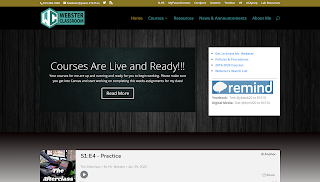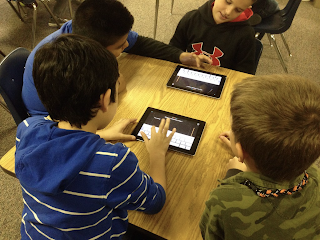Digital Licenses, Technological Implementations, & Newsletters!
Hello, and welcome back to my blog! <3
To begin this week's blog, I wanted to start with talking about copyright and fair use laws. Living in a digital-centered generation right now, understanding these laws are incredibly important. When a person creates a work of art through any medium, it is highly recommended to get a copyright on that art; copyright is essentially a collection of rights someone owns so that they can benefit from public use of their art. This license allows an artist to get credit for their work, without fearing that their work may get stolen, although the license is just for a limited time. Along with this, fair use laws are used to allow other people to use original works, as long as they have intended purposes, without needing specific permission from the creator of the content; people often take advantage of this law within news-reporting, YouTube videos, and through teaching with worksheets, drawings, etc. As a teacher, I would make sure to stay conscious of these laws. While I am a creative person and I will be trying to make most of the things I want to use in my class, I know there will be moments where I will need inspiration or incorporate images from other people, so in these situations I will have to be wary of permissions for arts I want to use. When I want to have my students create their own works, I will probably guide them by providing them suggested websites and networks to use for their assignments, so they don't run the risk of using something that doesn't have permission for public use.
Growing up, I noticed a progressive trend of technology implementation in school; as the years went on, we used computers, iPads, and other devices much more frequently. However, I did notice some issues that arose because of the frequent use of technology – a rapid increase of academic dishonesty and decreased productivity. With access to literally anything and everything on the internet, academic dishonesty is at an all time high now, especially with school currently being all online. Many people are guilty of looking up answers to homework assignments and tests/quizzes. The best way to avoid a situation like this is to just come up with your own questions. Writing original questions and answers rather than taking them from a textbook or copying word for word from another teacher's example can easily prevent students copying and pasting a question to their Google search bar and finding an entire quilt with every Q & A verbatim. The second demanding issue at hand is decreased productivity. I noticed especially in high school that many students would often get very distracted on their phones, either listening to their own music or responding to their best friend's snapchat, instead of paying attention to their teacher – I'll admit even I have been guilty of this at times. I have noticed though that this has occurred in classes where students constantly felt bored or felt the need to sneak their phone because they always felt restricted in that class, so at times it was done in a sense of rebellion it seemed. To combat this, I feel like it would be best to establish positive relationships with the students, providing a balance between respect, teaching, and fun. If students never feel bored with the class material, most likely they wouldn't be compelled to go straight to their phone. I feel like in my future classroom, I would try to allow kids specific free time to be on their phone so they have something to look forward to as the day goes on; doing this I think could alleviate the urge to go on the phone during class time as they will hopefully see it as a reward.
Adapting to this digital era, teachers have come up with a fun way to get news out to their students through the usage of newsletters. These newsletters can be printed out or viewed electronically and often provide important information about the teacher and the class content. Our class assignment of creating our own newsletter through a teacher lens was honestly incredibly fun for me, although I do have critiques for myself. Overall, I did learn a lot on how to use Microsoft Word as I only ever use it for writing essays, never to do fun, artsy projects, so this helped advance my skill in that a little bit. For the content of the newsletter itself, looking back I do feel like I may have written a bit too much on the meet the teacher section, so I may find a way to shorten it to something a bit simpler. I had a bit of difficulty finding a good way to format everything and where to place each box so it filled out the page nicely, and while I am proud of how it all turned out, I think in the future I will definitely play around with MS Word features to try and figure out different, and perhaps nicer, placement of everything so it makes reading smoother. While I was creating this newsletter, I discovered many features throughout MS Word that I made note of that will be extremely useful for creating not only newsletters, but also fun worksheets, homework assignments, tests, etc. The skills I learned for this assignment can be applied to my career to help me make my own work and make it look as cute as I possibly can!
Picture below is the newsletter that I created for our class assignment. I really love how it turned out! Since I want to teach in elementary school, I placed myself into a first grade teacher mentality and tried to make the newsletter look as friendly and as cute as possible. Let me know what you think! :-)




I liked the color and the header font types of the newsletter! Looks pretty organized and flows smoothly. The students would love it, for sure!
ReplyDelete